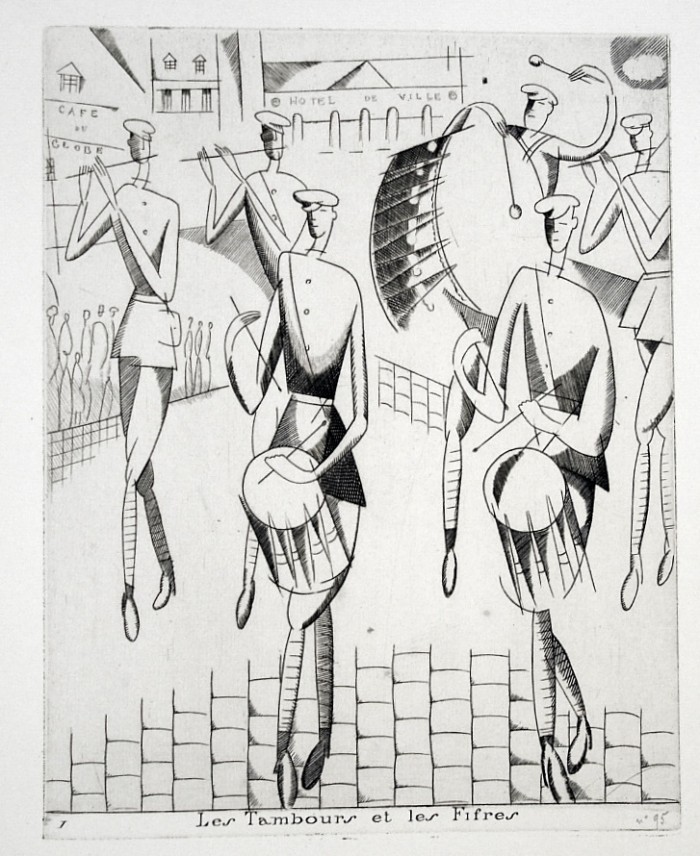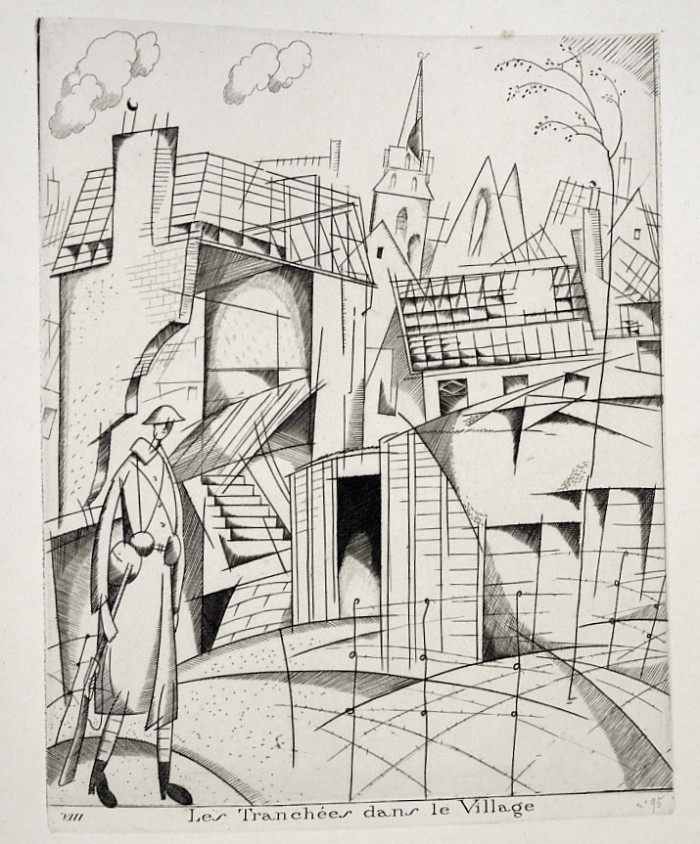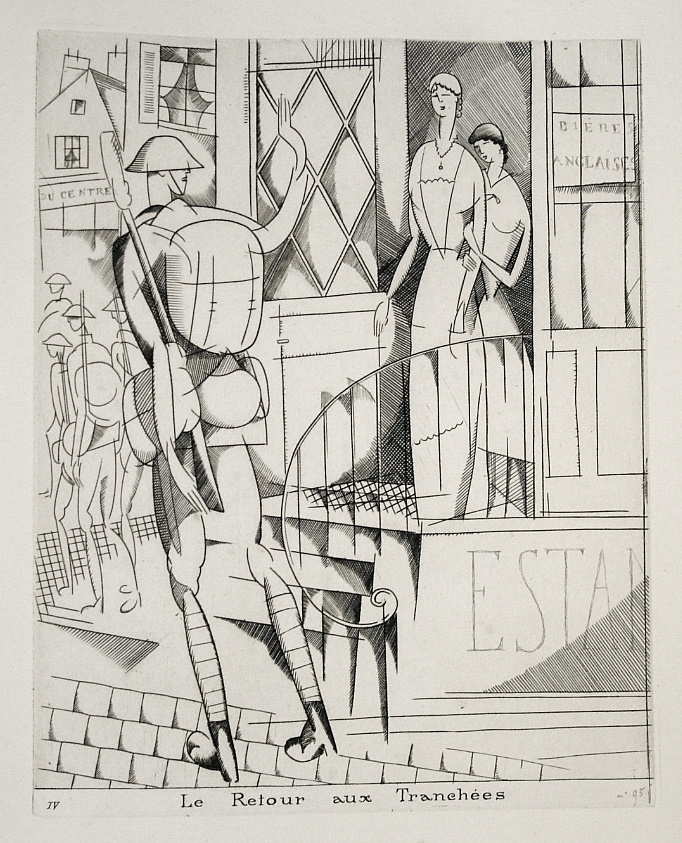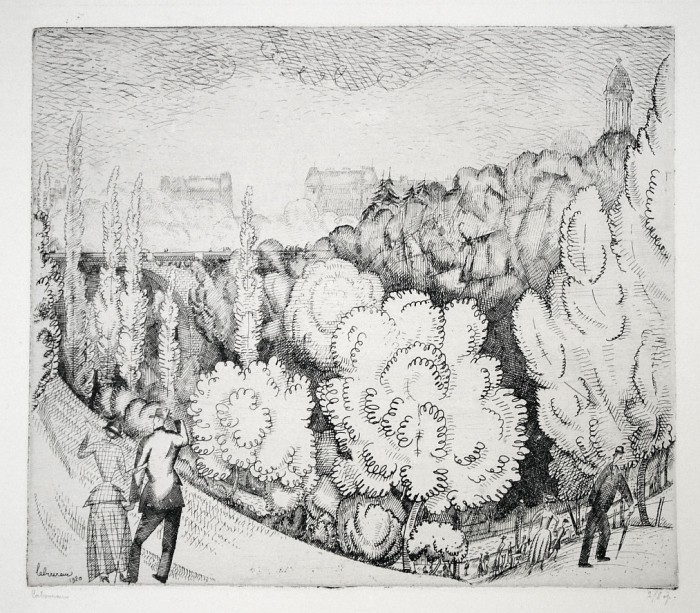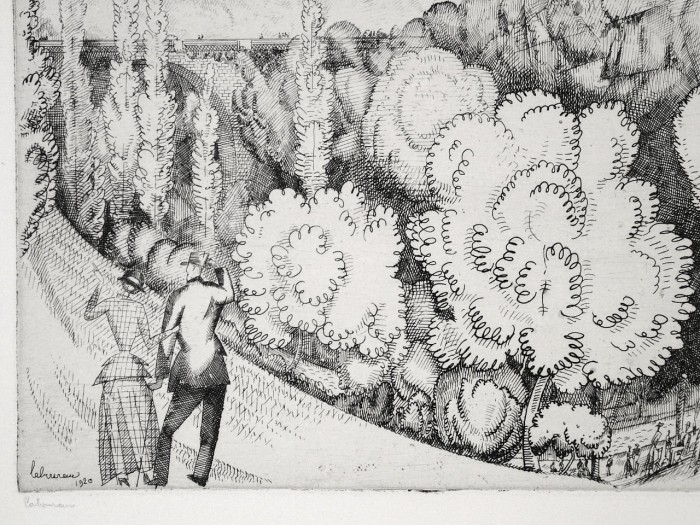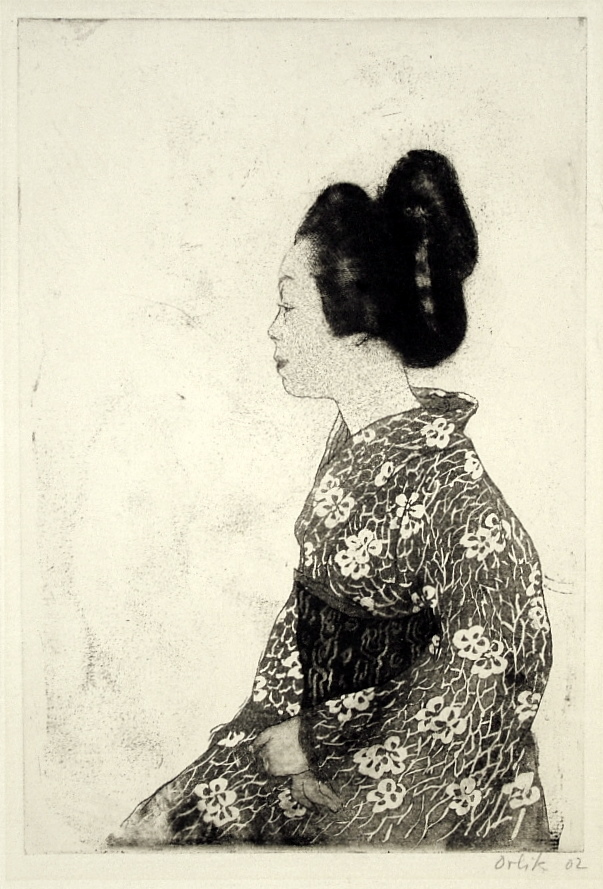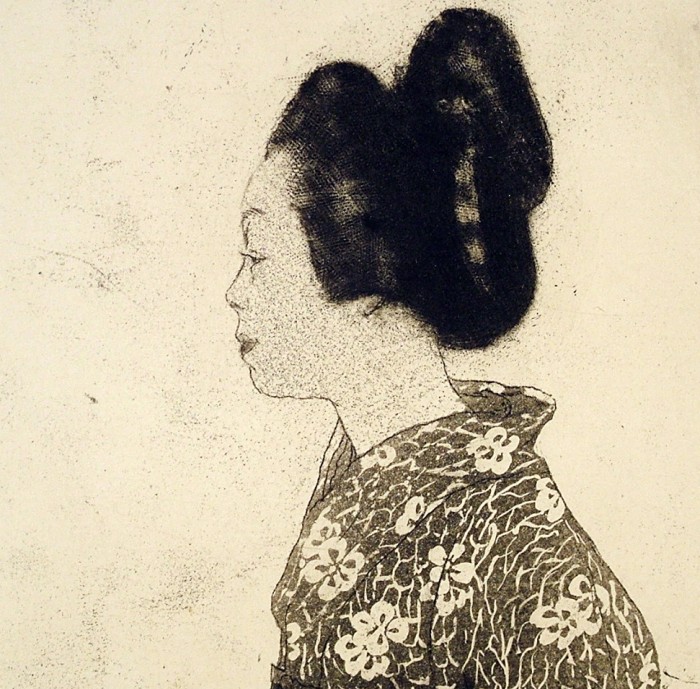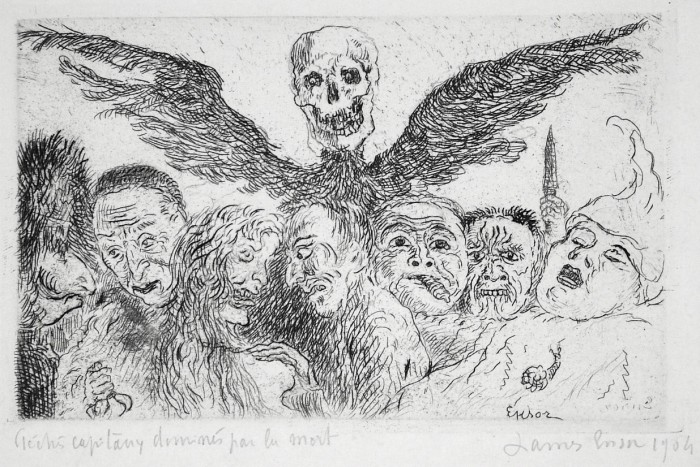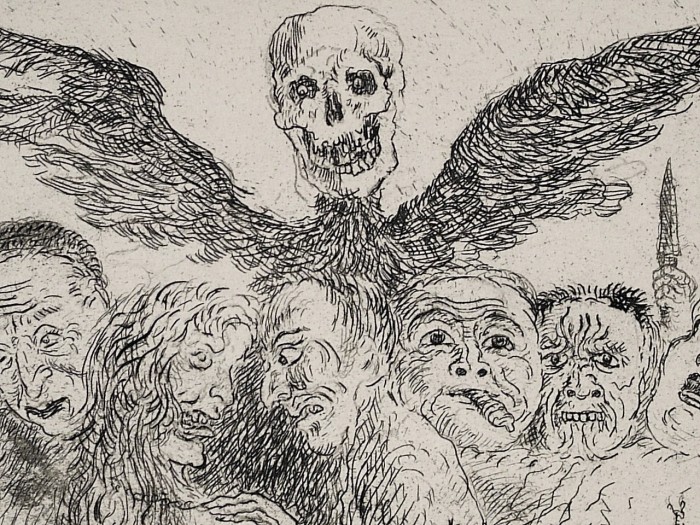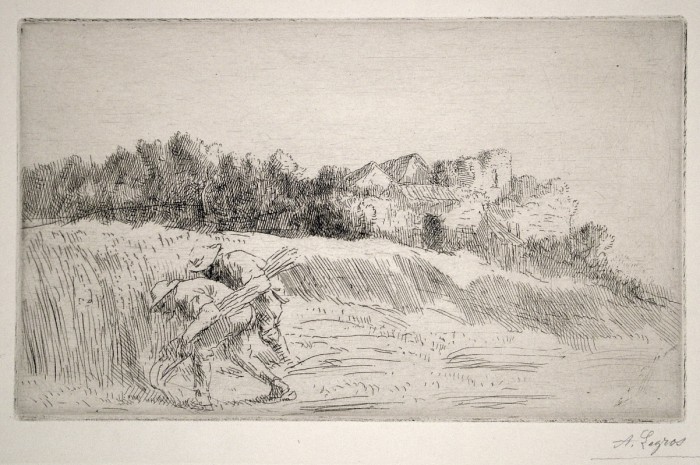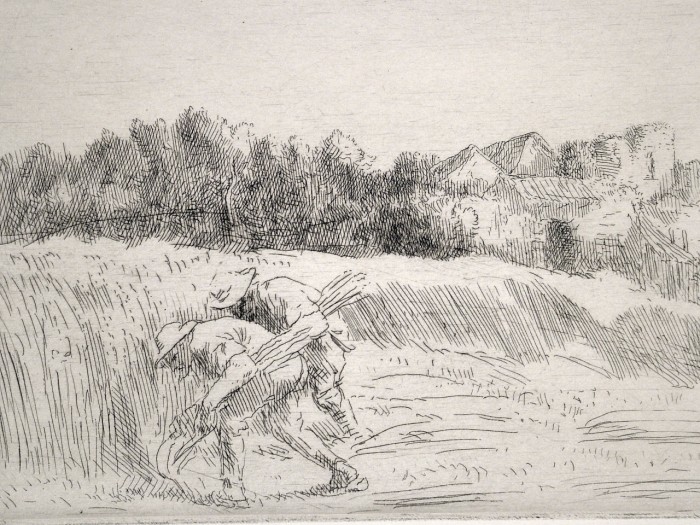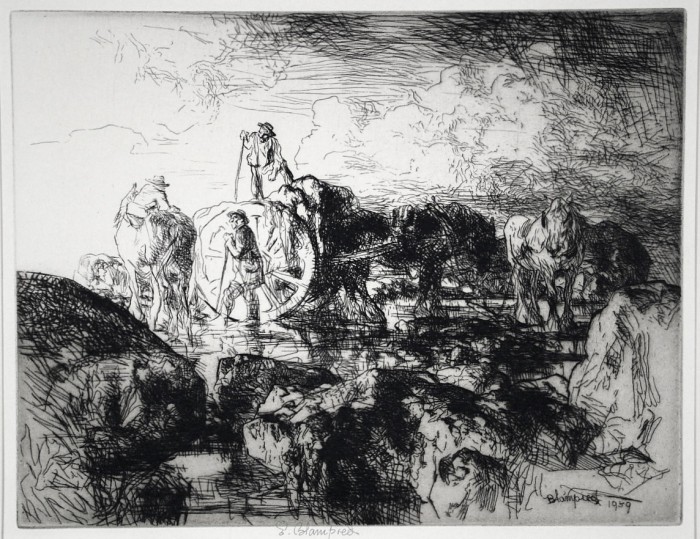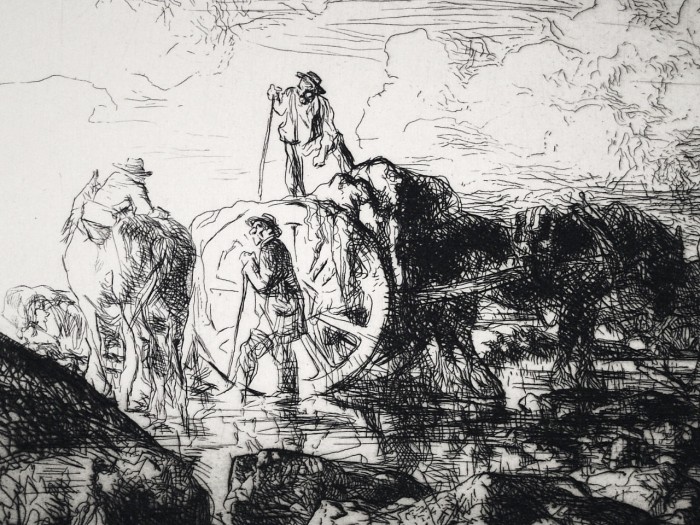Months of the Year – Set of 12 "after" Callot
Sunday, November 29th, 2009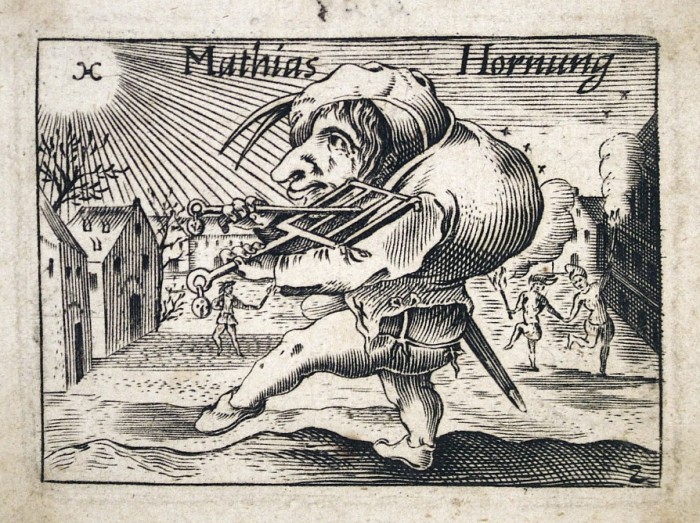
Mathias Hornung after Callot's Man Playing Grill as Violin (Lieure 423)
Months of the Year, a set of 12 prints derived in large part from Jacques Callot’s Les Gobbi (cf. Lieure 407-426, dated 1616). Published and possibly engraved by Paul Fürst (1608-1666), Nurnberg. [with the publisher/artist’s name P.Fürst Excu in the plate, and the name of each character]. Each print glued to a card just at the corners, with margins, glue and other stains coming through, other defects, 2 x 2 1/2 inches, the sheets 2 3/8 x 3 1/4 inches
A fascinating set, combining the humorous characterizations of Callot and following the German tradition of personifying the months of the year.
Each print is named after a month, i.e., the first is Fabianus Ienner (Fabianus January), then Mathias Hornung (Mathias February), Gregorius Mertz (March), Marcus April (April), up to Simion Weinman (October), Martius Wintermon (November) and Nicolaus Christmon (December). This follows an old tradition in German printmaking. For example, Hans Sebald Beham’s Peasant Festival or The Twelve Months, 1546 (Bartsch 154-163) follows the identical naming practice.
Paul Fürst was a publisher, print dealer, and possibly an artist as well. He is perhaps best know for his image of Doktor von Schnabel von Rom, a man dressed in a hawk costume, which apparently 17th Century doctors used when visiting patients to ward off the Plague. He published a few prints by Hollar; he was a contemporary of Hollar, but not Callot, although the Gobbi set would have been rather freshly known to Fürst since it would presumably have been made only a couple of decades before this set.
In creating the set the Gobbi imagery was followed loosely (and in reverse); in some cases the artist took imagery from a couple of the Gobbi plates to arrive at the desired composition. For example, Simon Weinman has the gross stomach of Callot’s “Man With Large Stomach” (Lieure 415), but holds a cup in the air in line with Callot’s Le Buveur (Lieure 411) (Weinman is of course a wine-man as well as Mr. October). Some of the images do not appear derived from Callot in any way except in spirit. But Nicolaus Christmon is clearly derived from Callot’s Man with a Falling Belly (Lieure 417), Philipus May from Callot’s Violin Player (Lieure 418), and Mathias Hornung from Callot’s Man Playing a Grill as a Violin (Lieure 423).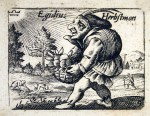


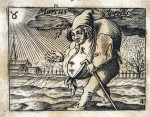
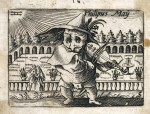
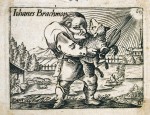
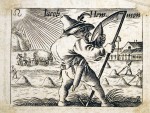


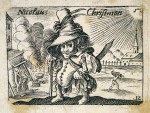

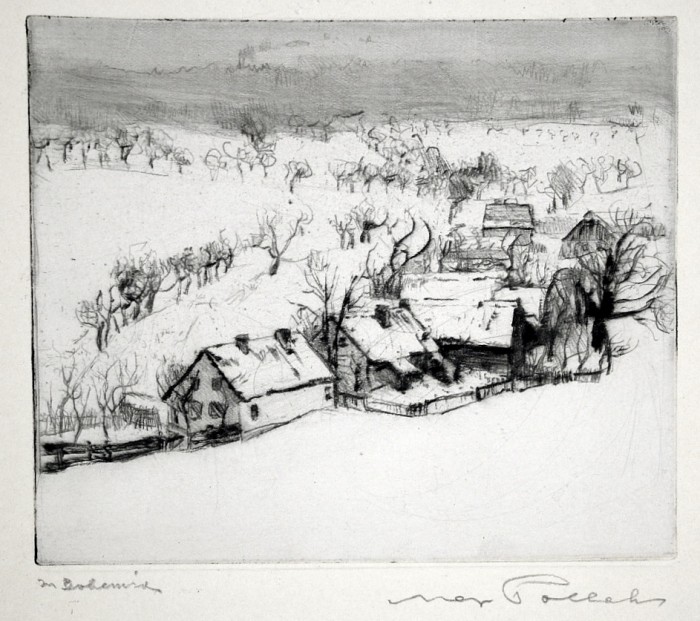
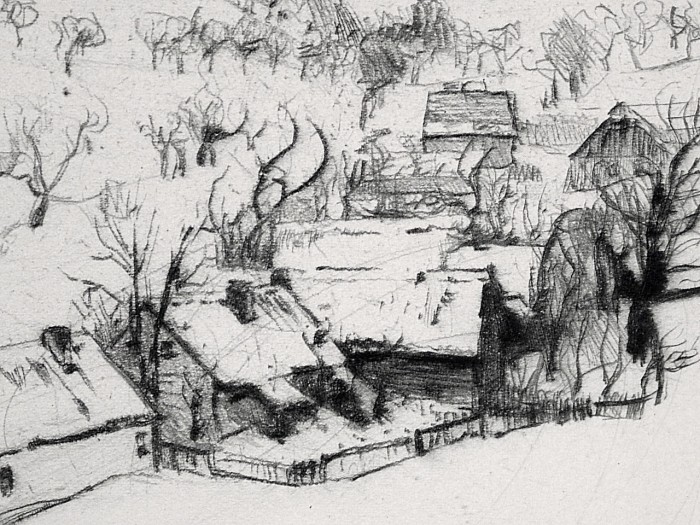

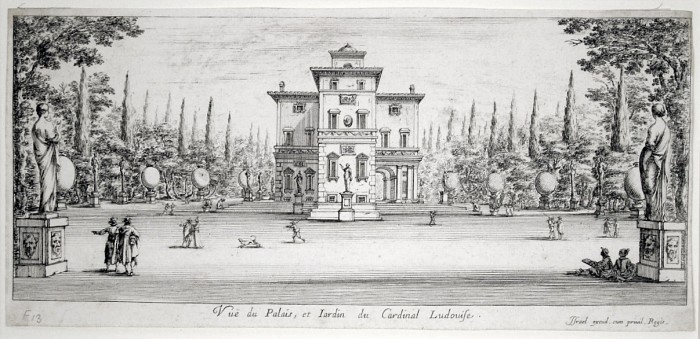
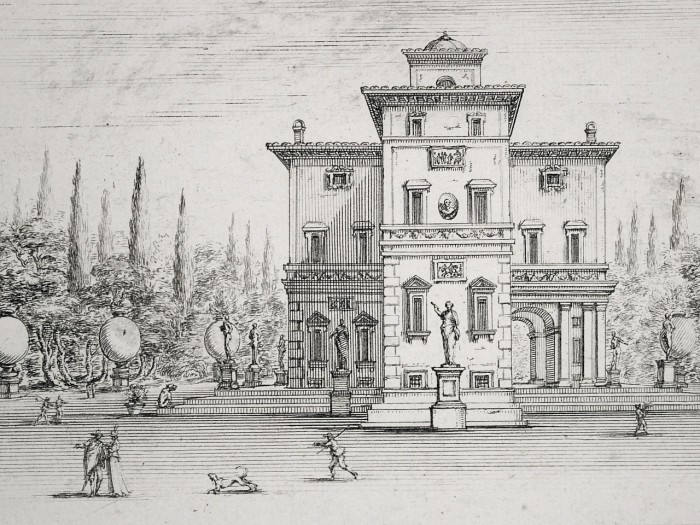
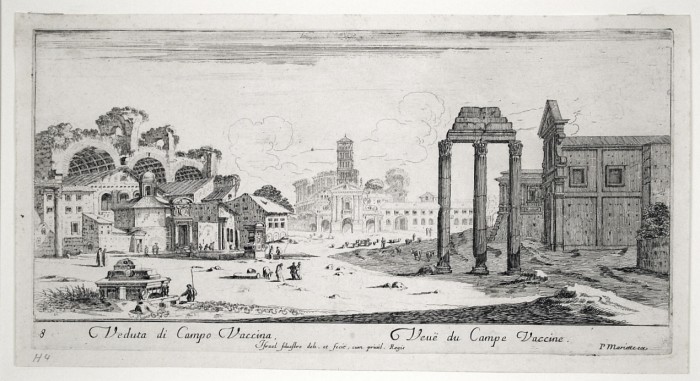
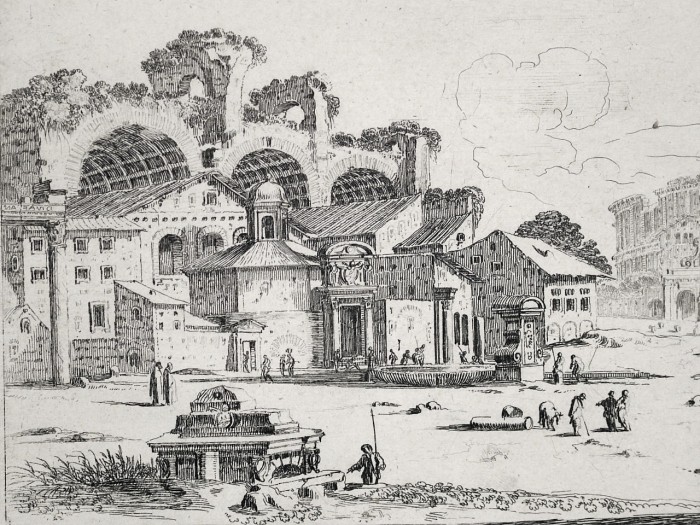
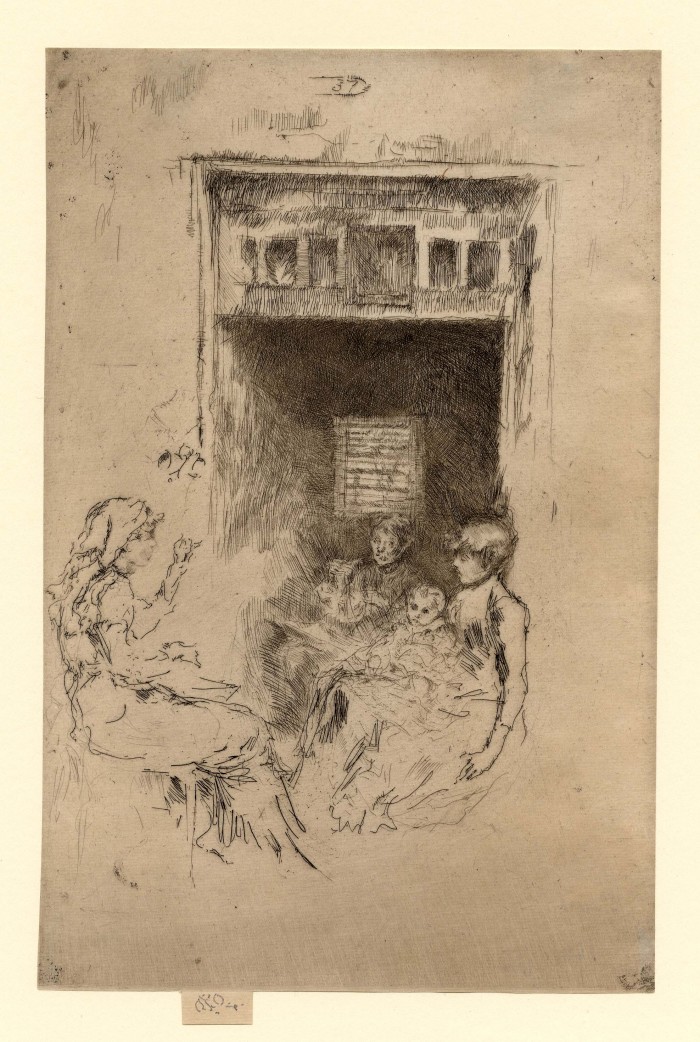
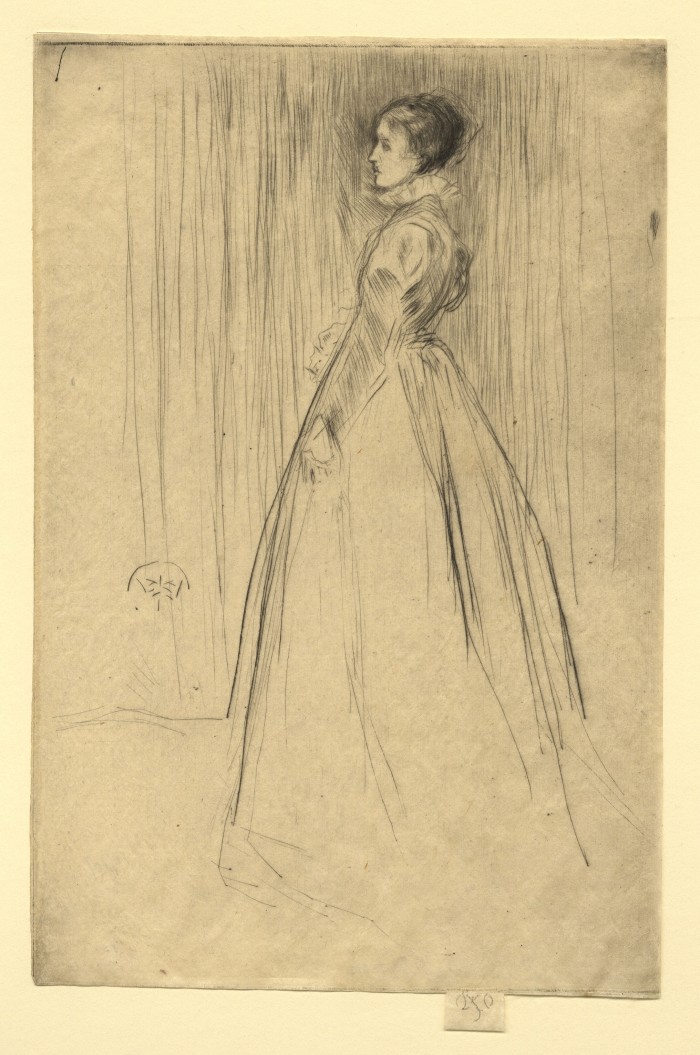
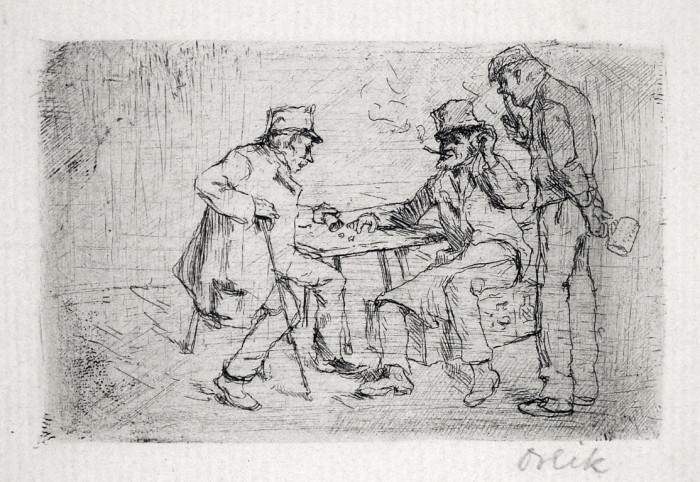
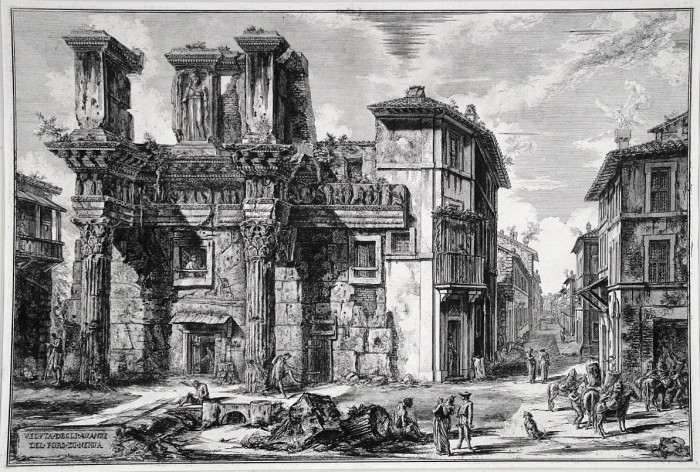

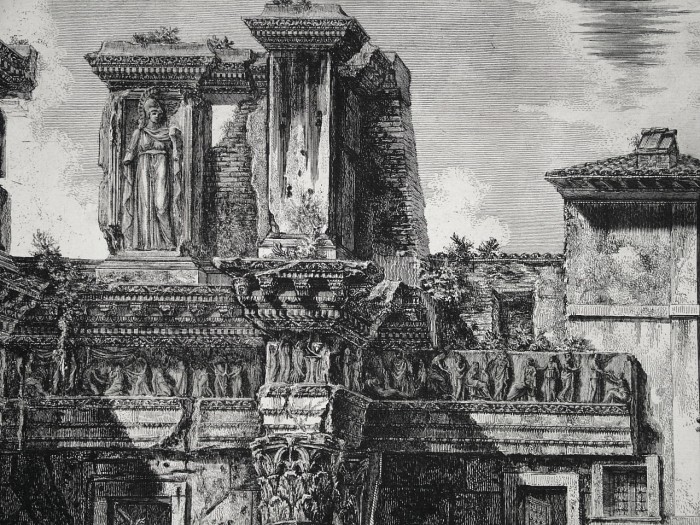
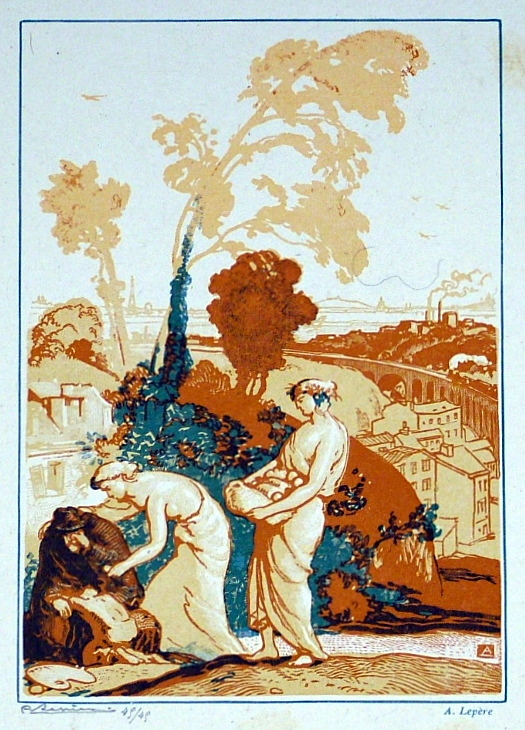
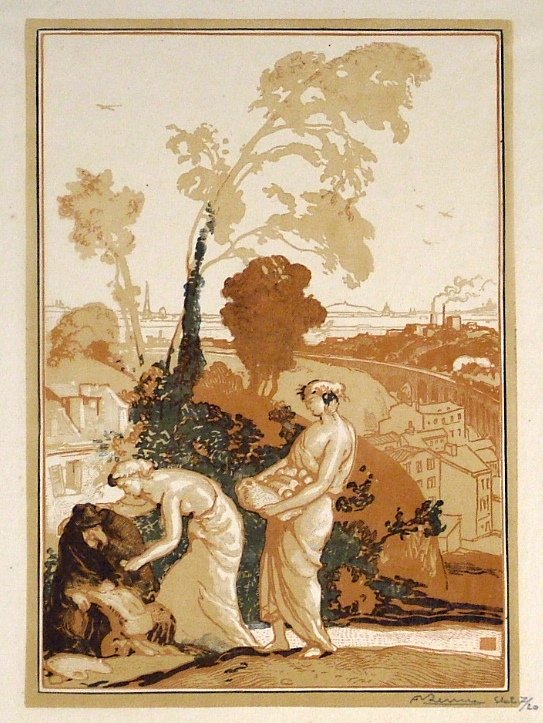
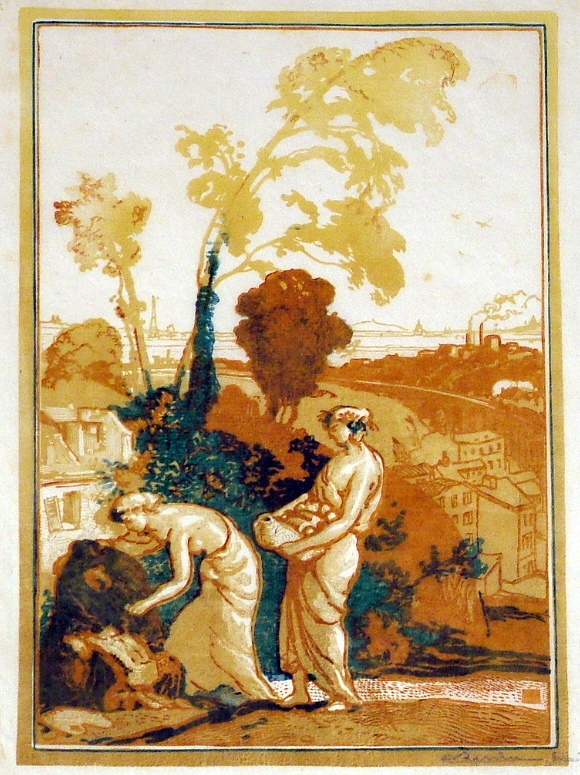
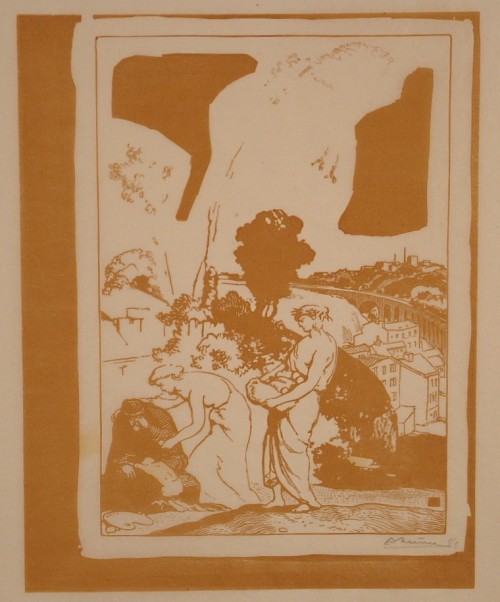
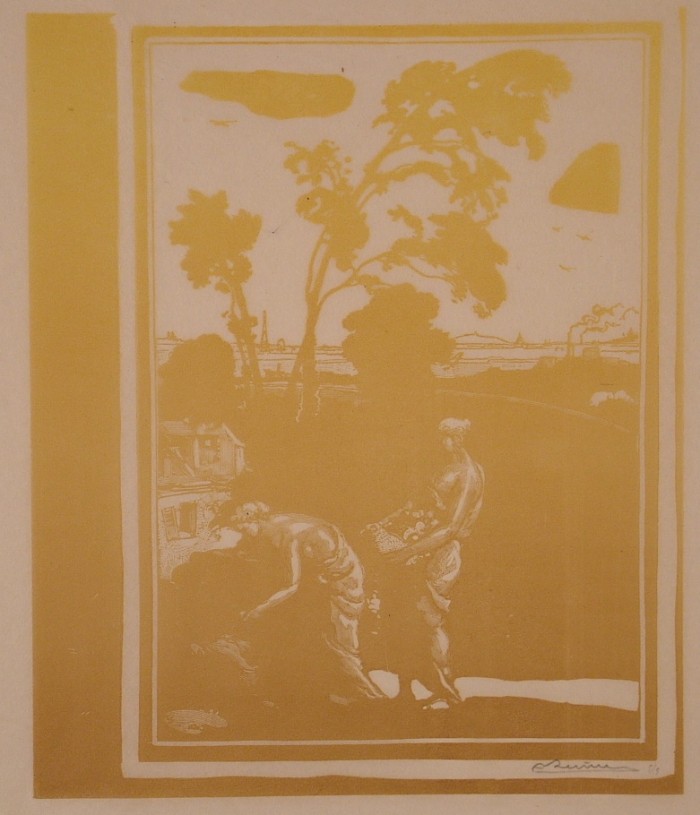
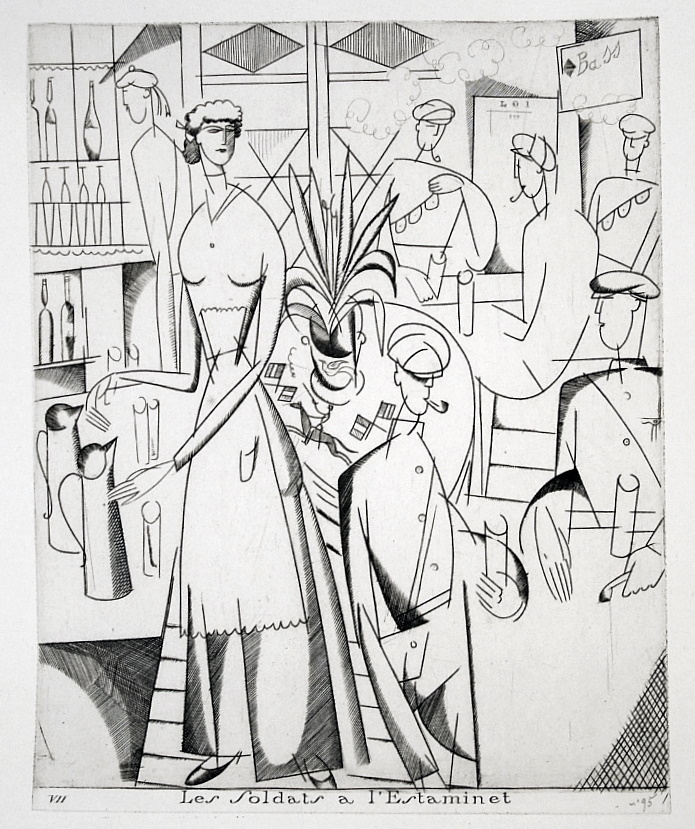 Jean-Emile Laboureur (1877-1943), Petite Images de la Guerre Sur le Front Britannique, Portfolio of 9 engravings, 1916, with the signature in pencil on the justification sheet, and numbered (95), from the total edition of 120; there were also about 30 proofs of earlier states and 15 in this state not in the edition. Reference: Laboureur 144-152, fourth state (of 4). In good condition, the cover of the portfolio worn but the prints and inside sheets in very good condition. The portfolio includes a title page which reads in part: “Neuf gravures au burin de J.-E. Laboureur precedees d’une Lettre sur les spectacles de la Guerre, de Roger Allard. A Paris, de ‘imprimerie d’A. Vernant, 6 rue Emile Dubois.” Each print is about 7 x 5 1/2 inches, on a sheet 11 x 8 3/4. Each impression is printed on a double sheet, which, when folded, is 11 x 8 3/4 inches.
Jean-Emile Laboureur (1877-1943), Petite Images de la Guerre Sur le Front Britannique, Portfolio of 9 engravings, 1916, with the signature in pencil on the justification sheet, and numbered (95), from the total edition of 120; there were also about 30 proofs of earlier states and 15 in this state not in the edition. Reference: Laboureur 144-152, fourth state (of 4). In good condition, the cover of the portfolio worn but the prints and inside sheets in very good condition. The portfolio includes a title page which reads in part: “Neuf gravures au burin de J.-E. Laboureur precedees d’une Lettre sur les spectacles de la Guerre, de Roger Allard. A Paris, de ‘imprimerie d’A. Vernant, 6 rue Emile Dubois.” Each print is about 7 x 5 1/2 inches, on a sheet 11 x 8 3/4. Each impression is printed on a double sheet, which, when folded, is 11 x 8 3/4 inches.